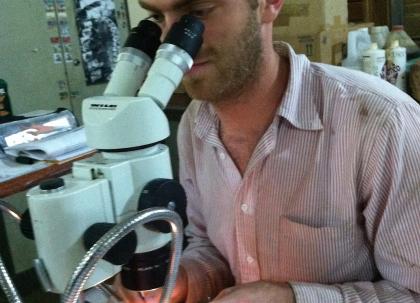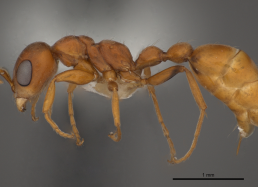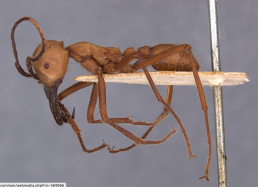Blog #15: Back at Home
Well, quite a bit of time has elapsed since our 2012 Expedition to Costa Rica, and I thought I'd fill you in on how the trip ended and what we've learned thus far since returning home to continue our research. All in all, we brought back thousands of specimens of ants, including examples of broods and castes from about a hundred different ant species. These specimens will be added to The Field Museum's permanent collections to represent ant populations found in this area of Costa Rica with many additional specimens sent back to museum collections in Costa Rica. Scientists in the future can then use these specimens to continue monitoring populations and habitat health, as well as how species change and adapt over time.
We also brought back gut samples from the ants that we'd collected in the wild and then raised on sterile diets back at the science station's lab. By comparing which bacteria remained in each species' guts after two weeks of "dieting," we were able to isolate which bacteria had merely hitched a ride aboard a meal, and which were permanent residents.
Comparing the resident bacteria in different ant colonies and species, we found some trends we expected, as well as some surprises. For example, as anticipated, more closely related ants seem to have more similar bacterial communities. This sounds obvious, but it's a necessary starting point. Also, ants within colonies seem to share more similar communities, even within species, which certainly suggests some sort of generational inheritance, but we we're still working to further define this heredity pattern.
However, our most surprising find was that the genus that includes Pseudomyrmex plant-eating ants has orders of magnitude fewer bacteria than the typical ant (see Photo #1 below.) We were shocked by this discovery, since our theory was that such a strictly "vegetarian" diet would likely require large numbers of bacteria to adequately digest their food and extract the necessary nutrients. Ben Rubin, our University of Chicago graduate student who has made this subject the topic of his dissertation, is still working to understand exactly how the limited number of bacteria within Pseudomyrmex is helping to supplement their diet, and we should have more answers soon.
Max Winston, our U of C graduate student who is studying army ants, has also been working to learn whether diet or daddies are responsible for the unusual submajor caste found in some species. Thus far, he's found no evidence that these "superworkers" are a result of the genes from specific fathers. Instead, it appears that this caste is found only in species of army ants with the largest colony sizes (analogous to body size) and the broadest diet (top predators).
In other words, it appears that the quality of their food supply determines the development of submajors (see Photo #2 below.) Extremely large colonies can bring in a bonanza harvest. When this rich food gets fed to developing ants, it triggers the release of juvenile hormones that cause certain characteristics to emerge—the long legs, beefy bodies, and giant jaws that create a superworker capable of carrying even bigger, better food back to the nest.
Max says that you can think of these submajors as the claws on an eagle—the eagle needs those claws to carry away its large catch. And just like the cells in those claws are patterned by certain chemical agents during development, the army ant embryo is exposed to a chemical that controls whether it becomes a submajor. A colony with more submajors has a better capacity to carry prey back to the nest, the same way that an eagle with larger claws has a better capacity to carry a large catch back to its nest.
But that still leaves us wondering whether it's genes of an ancestral giant that get expressed when the juvenile hormone is released, or whether it's simply that, since army ants live mostly above ground, their body size grows unrestricted by tunnels. Plus, we still have the mystery of why certain army ant species have queens that mate with many more males than is typical for ants. (As it turns out, queens from group of Eciton burchellii that Max studied during this expedition appear to mate with more males than any other known species of insect!) Max doesn't have a resolution for any of these conundrums yet, but he's working on it. And these issues demonstrate a typical pattern in the life of a scientist: answering one question usually results in a whole new list of questions.
Stay tuned for more updates in the coming months—the scientific process may take some time, but it always produces fascinating results!
Corrie






